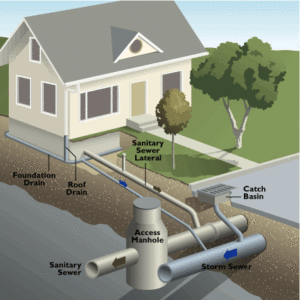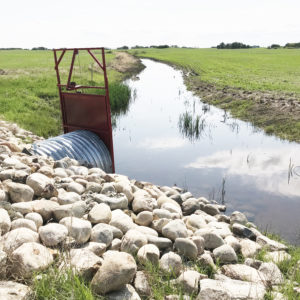
Saskatchewan Farm Stewardship Association (SaskFSA), established in 2011 represents over 250 land owners cropping approximately 1.15 M acres and retaining over 210,000 additional acres as conservation acres (forage, wetland or upland habitat).
SaskFSA is dedicated to ensuring that farmers are able to manage agricultural land and water to optimize efficiency while doing so in an environmentally acceptable and sustainable manner.
It is our intention to:

To the urban resident and urban centers drainage is essential. Eavestroughs are surface drainage channels collecting water shedding from an area (rooftop) and directly it to an appropriate outlet (the downspout, street, catch basin). Weeping tile is the sub-surface drainage collecting excess water and moving it away from the house into the approved outlet (storm sewer).
Without drainage, basements would become swimming pools, parking lots and streets would be unusable during rain events etc.

To the farmer managing excess water through drainage is essential for similar reasons – to protect an investment, provide security, to take care of what you own and to do so responsibly, to be a good neighbour etc. Beyond that drainage is critical to access fields in a timely manner, reduce crop damage and stress, protect and improve soil health, reduce nutrient overlap, promote uptake of nutrients by the crop and to overall enhance crop production and yield.
Surface channels direct water to appropriate / adequate outlets, tile drainage ties into surface channels, grassed waterways and rocks provide erosion control, appropriately sized culverts provide flow control and gated culverts provide an additional level of flow control in high risk areas.
For more information please contact us.